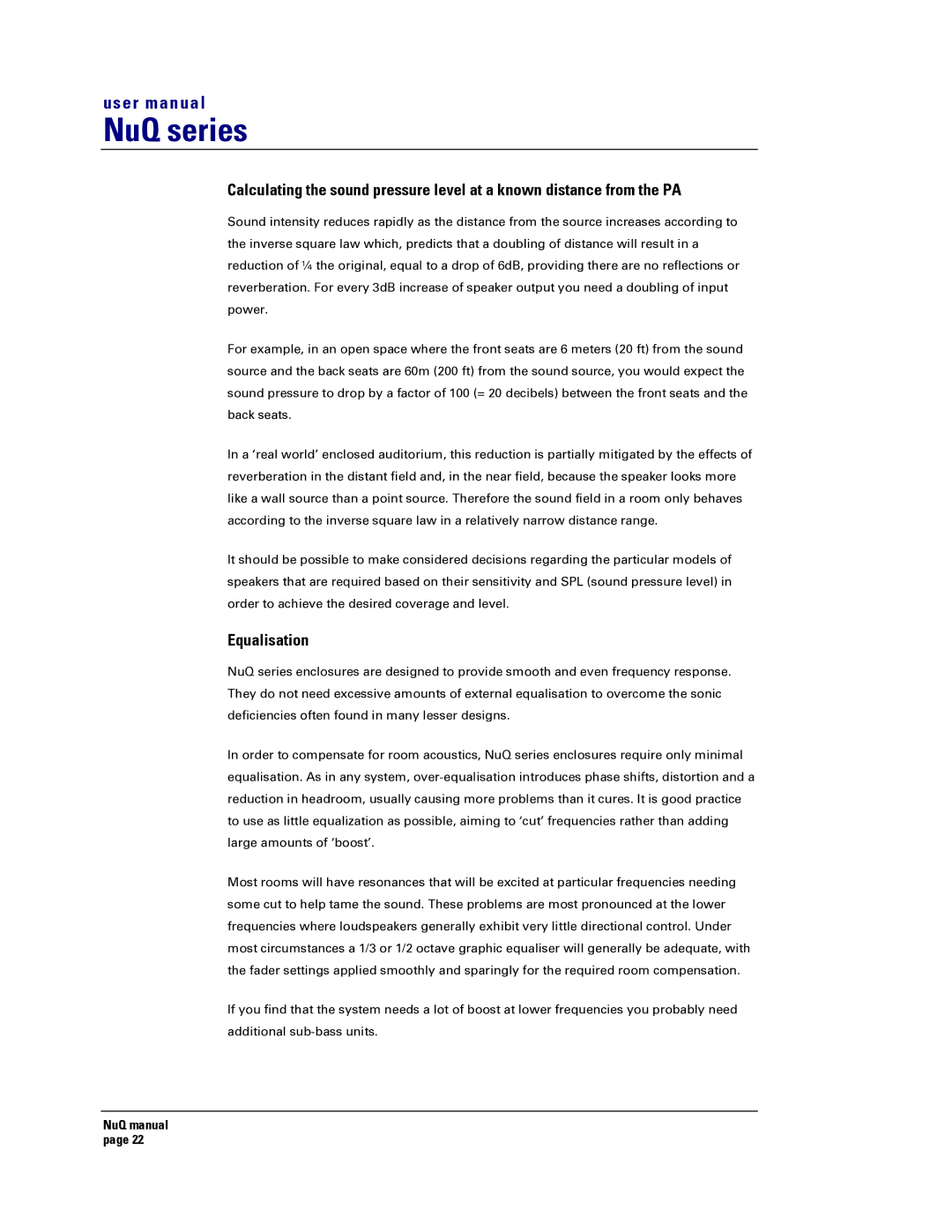
user manual
NuQ series
Calculating the sound pressure level at a known distance from the PA
Sound intensity reduces rapidly as the distance from the source increases according to the inverse square law which, predicts that a doubling of distance will result in a reduction of ¼ the original, equal to a drop of 6dB, providing there are no reflections or reverberation. For every 3dB increase of speaker output you need a doubling of input power.
For example, in an open space where the front seats are 6 meters (20 ft) from the sound source and the back seats are 60m (200 ft) from the sound source, you would expect the sound pressure to drop by a factor of 100 (= 20 decibels) between the front seats and the back seats.
In a ‘real world’ enclosed auditorium, this reduction is partially mitigated by the effects of reverberation in the distant field and, in the near field, because the speaker looks more like a wall source than a point source. Therefore the sound field in a room only behaves according to the inverse square law in a relatively narrow distance range.
It should be possible to make considered decisions regarding the particular models of speakers that are required based on their sensitivity and SPL (sound pressure level) in order to achieve the desired coverage and level.
Equalisation
NuQ series enclosures are designed to provide smooth and even frequency response. They do not need excessive amounts of external equalisation to overcome the sonic deficiencies often found in many lesser designs.
In order to compensate for room acoustics, NuQ series enclosures require only minimal equalisation. As in any system,
Most rooms will have resonances that will be excited at particular frequencies needing some cut to help tame the sound. These problems are most pronounced at the lower frequencies where loudspeakers generally exhibit very little directional control. Under most circumstances a 1/3 or 1/2 octave graphic equaliser will generally be adequate, with the fader settings applied smoothly and sparingly for the required room compensation.
If you find that the system needs a lot of boost at lower frequencies you probably need additional
NuQ manual page 22
